The very first BLAGO Fund fundraiser was held in San Francisco on May 10th, 1998. The BLAGO Fund is grateful to have the support of His Royal Highness Crown Prince Alexander Karageorgevich and the blessing of His Grace Bishop John (Jovan) of the Sumadija Diocese of the Serbian Orthodox Church, who serve as Patrons of the Fund (1998).
Invitation
Art Exhibit and Sale
 |
Dragoslav Pavle Aksentijevic
Born in Belgrade, Serbia in 1942. Graduated and acquired Master of Arts degree from the University of Belgrade, Academy of Arts. Pavle's iconography is inspired entirely by old Serbian and Byzantine frescoes. He has written the iconostases of several Serbian Orthodox churches. "Saint John the Baptist", 23"l x 15 1/2"w, Egg Tempura |
||
 |
Alexander Dzigurski II
Born in Atherton, California, in 1968. Graduated from the American Academy of Art, in Chicago, in 1990. The Big Sur coastline of California, the Hawaiian Islands, the coast of Maine, the Grand Tetons, and various Mediterranean scenes provide subjects for many of his oil, pastel, and watercolor paintings. "Evening Sunset, Big Sur", 18"l x 24"w, Oil |
||
 |
Olivera (Olja) Ivanjicki
Painter, sculptor, and graphics designer, Olja was born in Pancevo, Serbia. Graduated from the University of Belgrade, Academy of Arts in 1957, Olja has exhibited worldwide since 1955 and is regarded as one of the leading artists, in Serbia today. Her paintings can be found in many collections including the New York Metropolitan Museum of Art, the Santa Barbara Museum, the Philip Beman Collection, and the Mediala Foundation. "Velasquez' Little Court Ladies", 32"l x 26"w, Oil |
||
 |
Mina Markovic
Born in Belgrade, Serbia. Graduated in Psychology at the University of Belgrade. She studied at the Academy of Art College in San Francisco and earned her Master of Fine Arts degree from the San Francisco Art Institute in 1993. Her mixed media paintings have been exhibited in the San Francisco Bay Area and in New York. "Flag", 49"l x 31"w, Mixed Media |
||
 |
Vladimir Medenica
Born in Belgrade, Serbia in 1948. Studied at the University of Belgrade, Academy of Applied Arts and Architecture. In 1976, he received a Master of Fine Arts degree from the Otis Art Institute, in Los Angeles. Vladimir resides in San Diego where he teaches sculpture, drawing and painting at Palomar College. "Vanesa", 14"h x 6 1/2"w x 6"d, Bronze |
||
 |
Dusica Savic Benghiat
Born in Belgrade, Serbia in 1947. Graduated and acquired Master of Arts degree in Archeology, from the University of Belgrade. After moving to Los Angeles, in 1974, she devoted herself exclusively to painting, to developing her own independent style and to perfecting her unique techniques. Dusica has had fifteen one-woman exhibitions in the United States and in Europe. Untitled, 10"l x 8"w, Enamel on Board |
||
 |
Tatjana Vuleta
Born in Smederevo, Serbia, in 1967. Graduated from Belgrade University's Faculty of Applied Arts and Design in July, 1991 as the best student in her class. Acquired M.A. degree in Costume Design from the same institution in 1996. Her graduate work was centered around the reconstruction of medieval Serbian royal attire from monastery frescoes. Part of that collection will be presented. Her modern clothing designs include many elements from the Byzantine period. "ORNAT" Collection, Tavlion Blouson |
||
The BLAGO Fund thanks other artists:
Gilroy Pontiac Buick GMC Macy's Mafalda's Bridal & Alterations Nordstrom S. Prema Wylie Volunteers whose dedication and sacrifice made this labor of love possible. Exhibition director: Jovnka Chenich Stojakovic |
|||
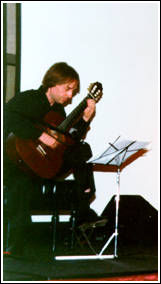 |
Dusan Bogdanovic, guitar Dusan completed studies of composition and orchestration at the Geneva Conservatory. He has taught there and at USC, and currently serves on the faculty of the San Francisco Conservatory of Music. He has toured and recorded extensively, pursuing a unique synthesis of classical, jazz and ethnic music. |
||
|
Prof. Ida Sinkevic, byzantology Ida graduated in art history from the University of Belgrade and received a Ph.D. degree from Princeton University. She has published work on Byzantine art and architecture, and on the Church of St. Panteleimon at Nerezi. Currently, she is an Assistant Professor at the Lafayette College Department of Art. |
|||
| Vladimir Vukicevic, UC Berkeley | |||
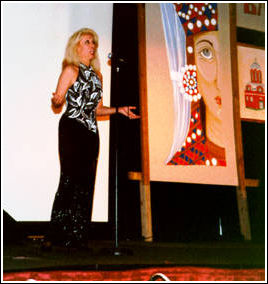 |
Dubravka Zubovic, mezzo-soprano Dubravka received an MA in solo-singing from the Belgrade Academy of Music and advanced training from La Scala in Milan. She has performed in major opera houses worldwide and is most famous for her roles as Carmen, Dalila, and Amneris in Aida. |
||
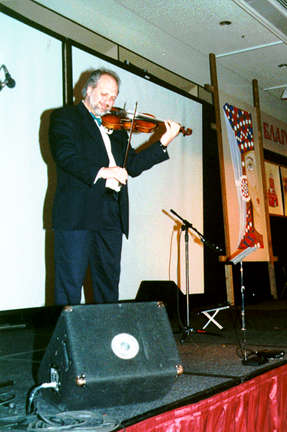 |
Slobodan Pesic, violin A political scientist by profession, Slobodan is also a recording artist that has served as music director and principal violinist for a number of musical companies, both in Yugoslavia and the United States, including the National Folk Ballet of Yugoslavia. |
||
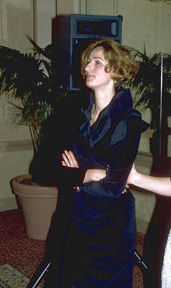 |
Tanja Vuleta, fashion designer Tanja received an M.A. degree in applied arts and design from the University of Belgrade, with a thesis on reconstructing medieval Serbian royal attire from monastery frescoes. This has served as an inspiration for many collections in her modern clothing design. |
||
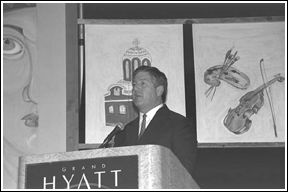 |
His Royal Highness Crown Prince Alexander Karadjordjevic The speech was given by HRH Crown Prince Alexander.
Ladies and gentlemen, It is a pleasure to be here with you this evening in San Francisco at this first fundraising event for the recently formed Blago Fund. I find it very important for all of us to give our support to promote Serbian Cultural heritage and particularly to support young Serbian talent. Serbian talent must flourish. It is an honor to be a patron of the Blago Fund together with His Grace Bishop Jovan of the Western American Diocese. The Karadjordjevic dynasty and the Serbian Orthodox Church must act together with every one of Serbian origin or descent and friends from everywhere to support such valiant efforts such as The Blago Fund, to preserve and promote Serbian cultural heritage. It is interesting to note that in all the periods of greatness and progress in the long history of the Serbian nation the Crown, the Church, and the People have always acted in unity to benefit the Serbian nation. In these particularly difficult and to put it mildly crazy days of where rule by division prevails in our homeland. Our great Serbian heritage is fading under the barrage of the negative use of nationalism and abuse of religion that only creates confusion and ultimately damages our great civilization. We must in a united and positive way revive our faith and culture both in the home country and in the Diaspora. The urgent regeneration of our cultural roots must happen to re-establish the pillars of Serbian nationhood and that must include true democracy, human rights, freedom of religion, equal rights for all citizens, culture, and education. We must not forget our wonderful history, the Nemanjic period of Serbian history, and more recently the rebirth of the Serbian State in the early 19th century. The Nemanjic period was remarkable not only for the birth and consolidation of the Serbian medieval kingdom but even more so for the flowering of Serbian culture and spirituality. The imposing Serbian monasteries of that period are evidence of tremendous cultural creativity and a source of great pride for the Serbs wherever they live. Some of the most beautiful of the monasteries are located in Kosovo and are an inalienable part of Serbian cultural heritage. I do not intend to go here deeply into the political aspect of the Kosovo situation. In a recent statement, I stressed that: "the world should understand something which is dear to all Serbs, namely that Serbian culture and Serbian spirituality, which contributed to the European and world heritage, were born in Kosovo, had flourished in Kosovo and must not be allowed to disappear from Kosovo".
How great our culture is, we should all be proud of the Nemanjic period and particularly the foundation of the Serbian monastery of Hilandar on Mount Athos in Greece. This year Hilandar is celebrating its 800th anniversary and it is only proper to use this occasion to recall the outstanding role it has played in Serbian history. Two men of royal birth founded Hilandar in 1198; Hilandar quickly became the most important center of Serbia's religious and cultural life. Its founders were St. Sava and his father St. Simeon, they were both outstanding personalities of the early period of the Serbian medieval kingdom. St. Sava became the first archbishop of the newly independent Serbian Church in 1219. He was not only a great churchman, but also an able statesman, diplomat, scholar and writer and, above all, an educator and founder of a higher phase of Serbian culture. His influence through the ages has been so great that the Serbian Church prides itself on being St. Sava�s Church. After the liberation from Ottoman rule in the 19th century, leaders of the reborn Serbian State, from Karadjordje onwards, worked hard to enable the Serbs to make up for the lost time and to catch up with Europe's civilizing process. Building on the foundations laid by St. Sava, the Crown, Church, and People again worked together to nurture the fragile new state and to help bring about a renewal of culture, education and good citizenship. Under my great grandfather, King Peter I Karadjordjevic, Serbia embarked on a golden age of democracy, cultural and educational progress. It earned great respect and prestige throughout Europe. King Peter I initially, and indeed my grandfather King Alexander I paid much attention to the expansion and consolidation of the educational system and cultural activities in the new Yugoslav State.
This is not the occasion to delve into what happened to Serbian culture under the communist regime. Neither is this the place to go into an analysis of the appalling tragedy, pain and dark negative era that has befallen the Serbs, neighbors and most of South-Eastern Europe in recent years. I will only repeat what I said about this in my Easter message last month. The causes of our tragedy are manifold, but the most important is the fact that we have lost our spiritual identity, our bearings as a nation. We have lost the feeling of common destiny and spiritual unity in which a nation and its state act in harmony with God's and man's laws for the good of all its citizens. This is the cause of our setbacks, defeats, our loss of direction. National culture is the core of the identity of the people. Any country would be lost, very dull, and totally insignificant without culture. I wholeheartedly agree with the goal of the Blago Fund to preserve and promote Serbian treasures in a way that ties together the past, present, and future. People of Serbian origin across the world have the responsibility to help preserve our culture. We also welcome advice and help from friends across the world. Perhaps, Serbs overseas have a greater responsibility since they do not suffer from economic hardship, the barrage of propaganda and other restraints experienced by our people at home under the regime. Culture defines us as a nation. Our great Serbian poet Jovan Ducic, who spent his last years here in the United States, gave a definition of homeland or "otadzbina". He said, "homeland is neither soil, nor the race, nor the language, but the collective spirit of the nation". I put it to you that this "collective spirit of the nation" finds its expression in many ways, but primarily in the cultural creativity of that nation. It is for this reason that we must all support the Blago fund. |

